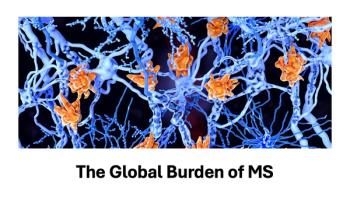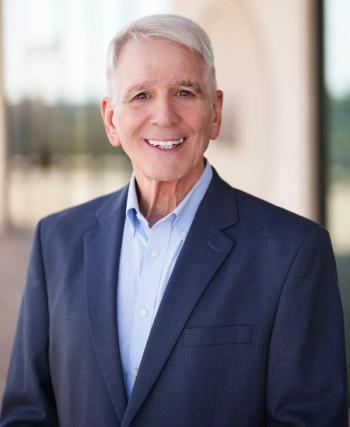
Are we relying too heavily on HCAHPS?
How to really understand patient experience and improve outcomes. Here are five tips to help you create a culture of excellence.
Data drives decisions. It’s no wonder, then, that the HCAHPS (Hospital Consumer Assessment of Healthcare Providers and Systems) survey has become the lynchpin for measuring patient experience. After all, it provides information on critical metrics, and survey scores have a financial impact. But does HCAHPS tell the whole story? And why does having the whole story matter?
Unfortunately, due to financial rewards or penalties associated with HCAHPS, we have equated patient experience with HCAHPS and have moved away from richer assessments of how patients experience their care. The critical elements which are not assessed in the HCAHPS survey include teamwork and the compassionate connection between patients and caregivers. HCAHPS can provide an idea of the frequency of how often specific tasks occur but not provide insight into the quality of how these tasks are being delivered.
Healthcare executives and providers desire to provide the best and safest care that maximizes the health of both patients and the communities we serve. A comprehensive picture of how patients perceive their care would offer a better platform for uncovering and, ultimately, improving gaps in patient experience. This, in turn, will help provide the safest, highest quality, and most efficient patient care.
Although HCAHPS does not measure the patient experience in its entirety, it does measure aspects of care such as pain management, responsiveness of hospital staff, discharge information, etc. The critical element missing in HCAHPS include teamwork and the compassionate connection between patients and caregivers which result in the absence of essential information providers need to assess and improve the environment/culture in which care is delivered.
Sustainable solutions
It is important to recognize that the HCAHPS survey was developed through a rigorous validation process and provides valuable information. However, with the most commonly used survey methodology, typical response rates are in the 15% to 20% range and do not capture the voices of the complete spectrum of patients we serve. Specifically, the methodology can generate responses from those patients who are most dissatisfied or alternatively, highly satisfied, missing the 85% of patients between the ends of the spectrum. By not capturing the full voice of the patients, the data accuracy and reliability are compromised.
The problem occurs when providers focus on individual domains of HCAHPS that may not truly represent the accurate voice of the patient population. This can lead to tactical solutions that fail to result in sustained gains and ultimately fatigue staff with “just one more initiative to drive patient experience.”
When we address a more complete set of metrics that accurately capture what is important to patients for an exceptional experience-those defined by patients over the past few decades- and captures the voices from the broad spectrum of patients we serve, meaningful interventions and action plans can be implemented and sustained to drive culture change.
What really matters to patients
In addition to HCAHPS, providers should also examine these areas shown to be important to patients:
· Does my healthcare provider team truly care about me and my health?
· Does my care team give me the perception that they have enough time for me, and do they actually provide enough time for me?
· Does my team respect me as an individual and my beliefs?
· Do they truly listen to me?
· Do my caregivers work well as a team and possess strong communication skills?
When we understand the need for a deeper level of engagement with patients, we position ourselves for more effective, efficient, and compassionate solutions built on communication skills that can boost patient experience. The safest, highest quality, and most efficient care is achieved when patient experience levels are high. It’s important to appreciate this intimate connection.
Our work needs to focus on creating a memorable exchange where there’s emotional attachment and partnership with the care team and with the patient at the center. We need to focus on “how” that care is delivered and the environment/culture from which it is delivered.
Pulling back the culture curtain
To truly deliver an exceptional patient experience, we must invest in work to enrich the culture of the workplace. This includes creating an excellent culture for caregivers as well as for patients. When we focus on creating an exceptional experience for caregivers through teamwork, communication, trust, and mutual respect, we reduce burnout and create a highly functional team. This in turn will drive outcomes and safety in positive directions for both employees and patients.
Research has shown high levels of teamwork are associated with reduced healthcare-associated infections, reduced medical errors and an increase in employee safety.
So how do we achieve high-functioning teams? A good place to start is with communication training for al staff, led by physicians, nurses, and administrative leaders. The single most important factor in patient satisfaction and engagement is the relationship a physician has with his/her patient. The way physicians connect with patients, staff and each other affects the culture and tone of the work environment.
The importance of strong communication within the care team cannot be overstated. Studies have shown that breakdowns in communication account for more than half of all preventable errors. Building strong lines of communication and trust with patients also improves care by helping patients feel like valued members of the team, which can motivate them to comply and follow through with their care plans.
We have a limited amount of time to influence our patients. Ninety percent of healthcare happens in patients’ daily choices outside the physician office and hospital. Excellent communication during the other 10% can buoy our efforts to help patients achieve success in their journey to health.
It’s the moment-to-moment conversations-the way we interact-that let people know how much we care. If we don’t get this right, the rest will not flourish.
Right measures benefit all
We have focused on countless “best practice” tactics through the years in hopes of delivering excellent clinical outcomes and exceptional experiences. Unfortunately, these tactics and checklists have produced limited results and are difficult to sustain. In the end, we are slightly further ahead compared to when we started.
Culture must come first. We must build trust, respect, and compassion while nurturing effective, authentic, compassionate communication. By doing so, we will build highly reliable teams.
By focusing on more comprehensive patient experience metrics and focusing more intentionally on our organizational culture, we can produce advantages for both patients and hospitals.
Patient advantages:
· Correct identification of needs
· Better change in health behavior
· Improved adherence to therapy
· Reduced anxiety
· Better service experience
· Better patient outcomes
Provider advantages:
· Improved time management
· Improved job satisfaction
· Reduced staff turnover
· Reduced malpractice claims
· Increased loyalty
Patient-centered, team-based care is a journey leading to sustained improvement in clinical outcomes, safety, efficiency, and patient and caregiver experience. When we truly connect with patients, we reconnect with our purpose and can once again experience satisfaction and joy in our daily work.
Meaningful measures
Consider these tips to help you create a culture of excellence:
1. Include metrics in addition to HCAHPS that accurately and reliably reflect patient experience over time.
2. Evaluate a composite of metrics that assess clinical outcomes, safety, efficiency, experience and the joy of practicing medicine to most accurately assess the culture you are creating.
3. Avoid tactical solutions-work on the culture. Tactical solutions and checklists are helpful but only when implemented in a culture that will nurture the tactical solutions. Start with culture first, and then layer on tactical and technical solutions.
4. Understand culture is intimately related to the moment-to-moment conversations we have. Focus a good portion of your culture work on skills-based work that nurtures effective, efficient, and compassionate communication. Invest and engage in skills-based communication training that is led and facilitated by physician, nurse and administrative colleagues.
5. Be patient, as culture change and improvement come slowly and gradually.
William Maples, MD, is the chief medical officer at
Newsletter
Get the latest industry news, event updates, and more from Managed healthcare Executive.






















































